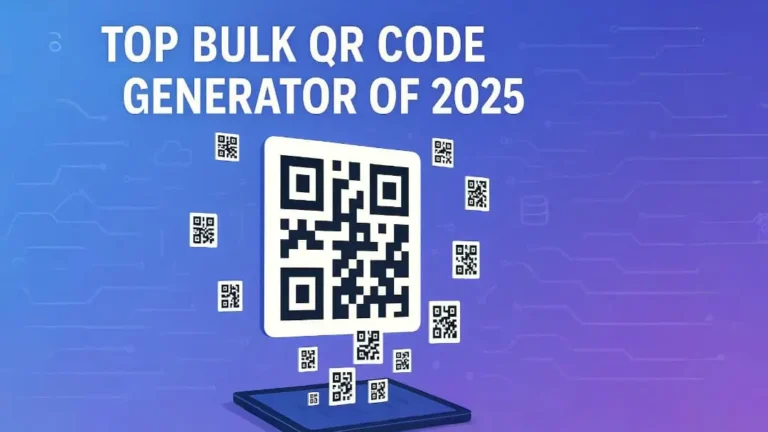The fascinating world of programming languages is not only filled with intricate algorithms and powerful tools but also rich with history. Each programming language has its own unique story behind its creation, and one of the most intriguing aspects is the origins of their names. In this article, we explore how programming languages got their names, uncovering the inspiration, reasoning, and sometimes even the humor behind them.
Also Read: 10 FREE Microsoft online courses with certification
The Naming of Programming Languages: A Brief Overview
When it comes to programming languages, the naming process is often a combination of technical considerations, cultural influences, and sometimes sheer creativity. The name of a programming language can reflect its purpose, its founder’s background, or simply a nod to an existing language or technology. Understanding the reasons behind these names helps provide insight into the development of the programming languages themselves.
The Early Days of Computing: Origins of Names
The journey into programming languages begins in the 1950s with Fortran, one of the first high-level programming languages. Created by IBM, its name stands for Formula Translation. This name clearly reflects the language’s primary purpose: to translate mathematical formulas into executable code. The simplicity and directness of the name emphasized the language’s focus on scientific computing.
The Origin of Lisp: List Processing in Early AI Research
Another early language, Lisp, named after LISt Processing, was developed by John McCarthy in 1958. The name succinctly captures the language’s focus on list processing, which was a revolutionary concept at the time. Lisp’s name not only serves as a direct description of its functionality but also shows how the simplicity of early computing innovations helped shape the language’s identity.
Cultural and Personal Influences on Programming Language Names
How the C Language Got Its Alphabetical Name
As the world of programming grew, so too did the influence of cultural and personal references on naming. For example, the language C, developed by Dennis Ritchie at Bell Labs in the 1970s, was named as a successor to B, another language created by Ken Thompson. The progression from B to C reflects a logical naming convention, but it also had a deeper connection to the alphabet, signifying the language’s place in the evolution of computing.
The Fun Behind Python’s Name Inspired by Comedy
Then there’s Python, named after the popular British comedy series Monty Python’s Flying Circus, a personal favorite of its creator Guido van Rossum. The name reflects the creator’s playful approach to programming, and it’s a testament to how personal influences can seep into the development of a major programming language.
Ruby: A Gem of a Programming Language Name
Similarly, Ruby, developed by Yukihiro Matsumoto, was named after a precious gemstone because the creator wanted the language to be as valuable and beautiful as a ruby. In naming the language, Matsumoto emphasized the aesthetic appeal and usability, showing how names can carry a sense of artistry alongside function.
The Rise of Acronyms in Programming Language Names
Fortran and the Birth of Technical Acronyms in Language Names
As the 1980s and 1990s approached, programming languages began adopting acronyms as their names. These acronyms often reflected the languages’ technical features or the purposes they served. Take HTML (HyperText Markup Language), for instance. Its name is a precise reflection of its function: creating hypertext documents for the web. HTML’s name may be simple, but it’s incredibly efficient in conveying its primary role in the web development ecosystem.
SQL: Structured Query Language for Database Management
Another famous example is SQL (Structured Query Language). Developed by IBM in the early 1970s, the name captures its core purpose: interacting with structured data. SQL has since become one of the most widely used languages for database management, and its name continues to serve as a clear, concise indicator of its function.
CSS and JavaScript: Naming Languages for Web Design and Interactivity
CSS (Cascading Style Sheets), created to add style to web pages, follows a similar naming convention. The name reflects how styles “cascade” from one level of a webpage to another, providing a hierarchical structure to web design. JavaScript, on the other hand, may be an acronym for Java and Script, but it was strategically named to capitalize on the popularity of Java in the mid-1990s, despite being an entirely different language with its own distinct functionality.
Humor and Playfulness in Programming Language Names
The Go Language: Simple Name for a Powerful Tool
Not all programming language names are strictly functional or serious. Some creators infused their languages with humor or wit. For instance, Go, also known as Golang, was developed by Google engineers to be a simple, fast, and efficient language. The name Go is brief, to the point, and reflects the language’s goal of speed and simplicity.
Swift by Apple: Fast, Elegant, and Appropriately Named
Similarly, Swift, developed by Apple, reflects the language’s intended purpose: a fast, efficient way to develop iOS and macOS applications. The name is not just about the speed of the language itself but also a reflection of the ease of use that Apple aims for in its products.
Scratch: A Playful Introduction to Programming for Kids
Then there’s Scratch, a visual programming language designed for children. Its name evokes the idea of starting from scratch, or building something from the ground up. The playful name encourages younger audiences to engage with coding by making it more approachable and fun.
The Impact of Industry Trends on Naming Conventions
Rust: A Language Focused on Safety and Performance
As the tech industry evolves, so too do the trends in naming programming languages. For instance, Rust, a systems programming language, was named after the rust fungi found in nature, symbolizing the language’s goal of preventing the “rust” of poor programming practices. Rust’s name evokes the language’s emphasis on memory safety and efficiency, crucial features for low-level systems programming.
Also Read: 10 FREE Microsoft online courses with certification
Short, Memorable Names: Swift and Go Set New Standards
Similarly, Swift and Go are part of a larger trend towards short, memorable names that emphasize the simplicity and speed of the languages. These names align with the growing demand for efficient programming tools that support agile development and modern applications.
The Influence of Corporate Branding on Programming Language Names
Also Read: Next JS Project Ideas to Boost Your Portfolio
Java: A Coffee-Inspired Name for a Versatile Language
In many cases, the name of a programming language is influenced by the branding efforts of the companies that created them. For example, Java was named after Java coffee, a nod to the creators’ love of coffee. The name was catchy, easy to remember, and had a strong association with the type of energy and creativity that the creators wanted their language to embody.
C#: Microsoft’s Musical Inspiration for a Modern Language
Similarly, C#, developed by Microsoft, uses the sharp symbol (♯) as part of its name, symbolizing musical sharpness and aiming for a higher standard in programming languages. The name combines a musical reference with the goal of elevating the .NET framework’s capabilities.
The Future of Programming Language Naming Conventions
As the field of programming continues to grow, we can expect new languages to emerge with innovative naming conventions. Whether it’s a nod to a famous figure in computing, a cultural reference, or a new technological trend, the names of programming languages will continue to evolve. It’s also likely that future languages will adopt even more acronyms, short names, and playful monikers to reflect the ongoing shift towards making programming more accessible, fast, and fun.
Also Read: The Modern Web Stacks You Should Know About
Conclusion
In summary, the names of programming languages offer more than just a label for a set of instructions. They reflect the culture, history, philosophy, and goals behind the language’s creation. Whether they are inspired by function, culture, humor, or branding, each name tells a unique story about the world of programming and the people who shape it. As new languages continue to emerge, we can only imagine how naming conventions will evolve in the ever-changing landscape of software development.
You may also like
Website vs Web App: Understanding the Key Differences

Jul 27, 2025
·5 Min Read
In today’s digital-first world, choosing the right online platform is more important than ever. Businesses, startups, and individuals are often faced with a key decision: should we build a website or a web app? While both serve users through a browser, their purpose, functionality, and level of interactivity are quite different. Understanding the difference between […]
Read More
Top Shadcn Component Libraries You Must Use

May 28, 2025
·4 Min Read
Modern web development demands speed, consistency, and elegant UI. Shadcn-based libraries deliver all three. Whether you’re building dashboards, SaaS tools, or dynamic websites, these libraries simplify your workflow and enhance performance. Below is a curated list of the best Shadcn component libraries categorized by functionality. 🌐 What is Shadcn and Why It Matters in UI […]
Read More
Top Bulk QR Code Generator of 2025

Apr 28, 2025
·3 Min Read
In the digital era, QR codes have become indispensable tools for businesses, marketers, educators, and event organizers. Generating them in bulk can save time, increase efficiency, and streamline processes. We have curated a comprehensive Top Bulk QR Code Generator of 2025 available today to help you choose the perfect tool. What is a Bulk QR […]
Read More
10 FREE HTML CSS Template Websites

Mar 16, 2024
·3 Min Read
In the ever-evolving world of web design, having a solid foundation is key to creating visually appealing and functional websites. HTML and CSS are the building blocks of the web, and having access to free templates can save you both time and effort. In this article, we’ll introduce you to 10 FREE HTML CSS template […]
Read More
React Hooks Cheatsheet

Jan 21, 2024
·4 Min Read
React, a popular JavaScript library for building user interfaces, introduced Hooks to make functional components more powerful and expressive. Let’s dive into the React Hooks Cheatsheet to understand how they enhance the development experience. React Hooks Cheatsheet In the ever-evolving landscape of web development, React Hooks have become indispensable for building dynamic and efficient user […]
Read More
Free Udemy Courses for Web Developers

Dec 30, 2023
·4 Min Read
In the fast-paced world of web development, staying up-to-date with the latest technologies and skills is crucial. However, enrolling in courses can be expensive, and not everyone has the budget for it. This is where Free Udemy Courses for Web Developers come to the rescue. In this article, we’ll explore this invaluable resource, providing you […]
Read More



